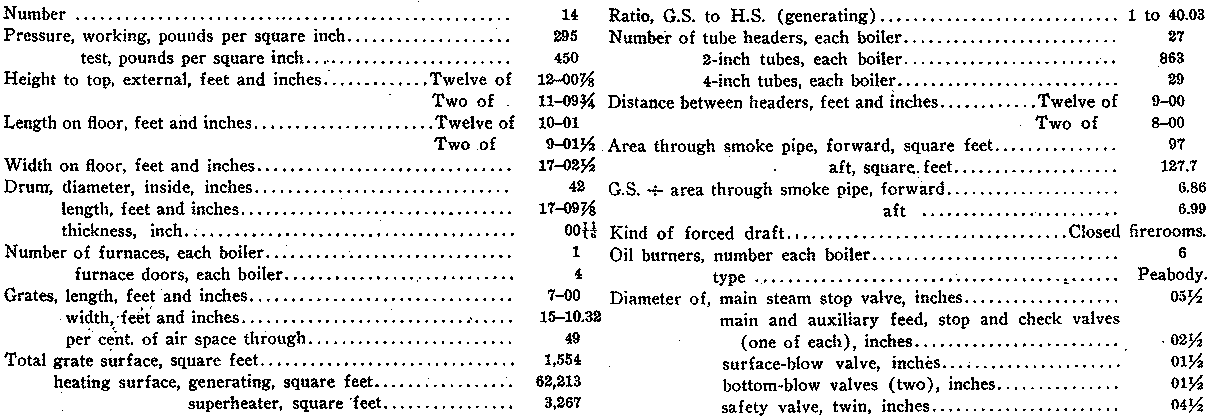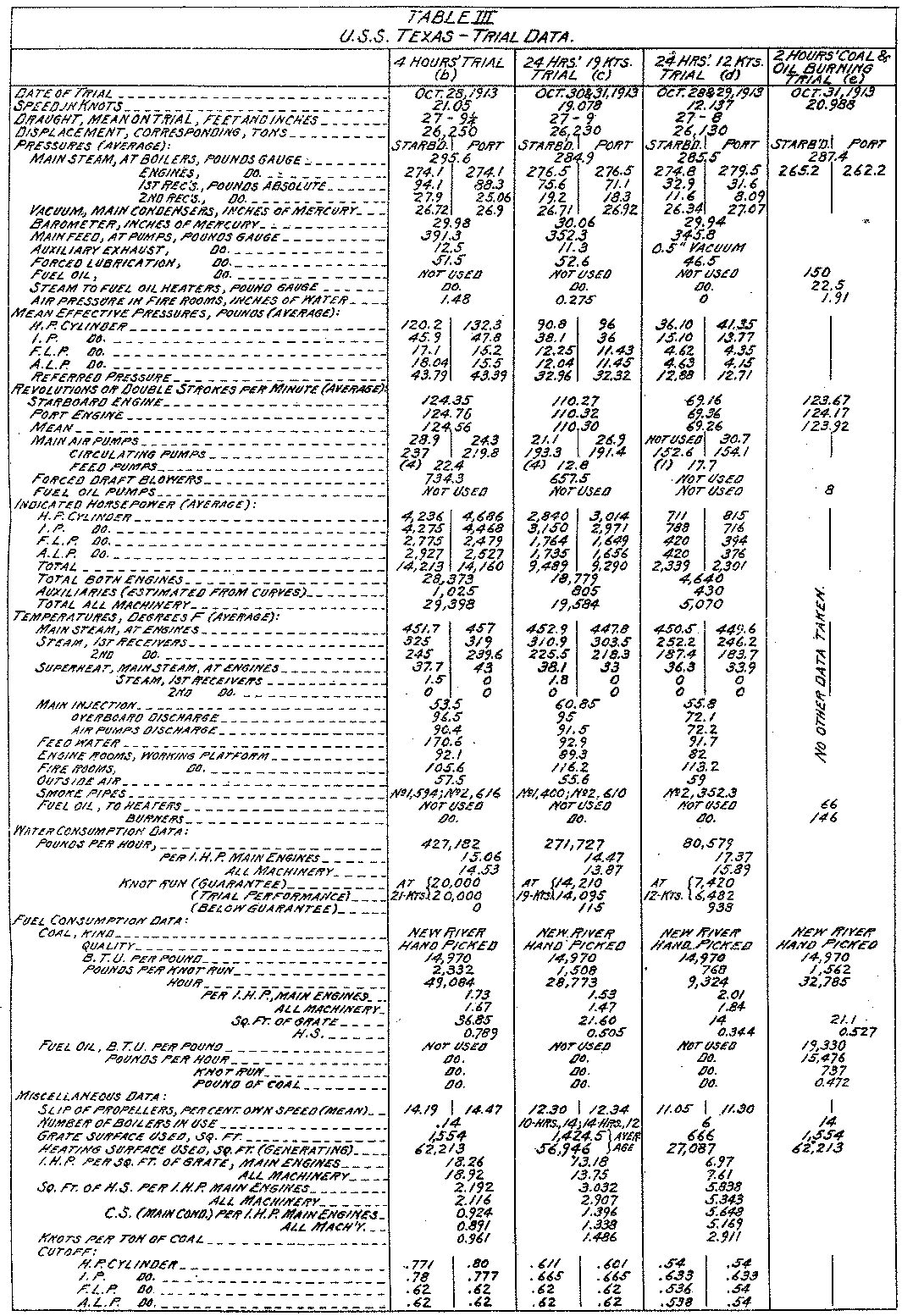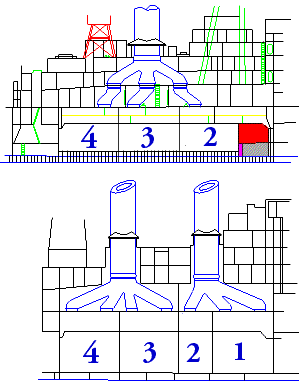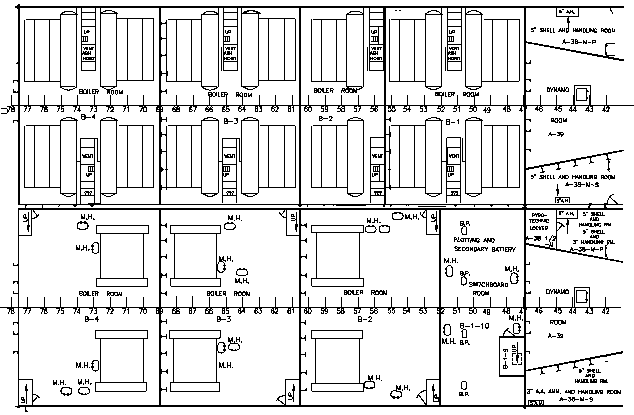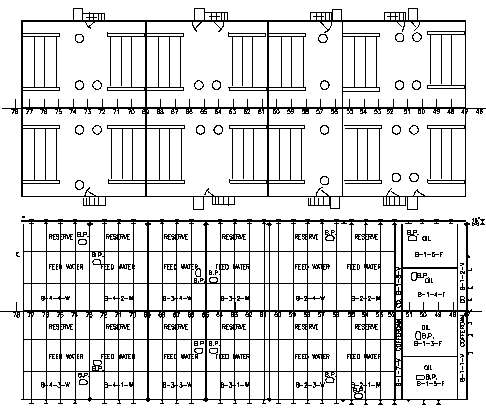The boiler system comprised 4 boiler
rooms with 14 boilers, of which 8 were superheated. They were riveted
construction and operated at a maximum pressure of 295psi but were tested to
450psi. Though designed as coal burners, each boiler had 6 oil burners which
were used when the ship needed to operate at high speed. To communicate with
other parts of the ship, the four boiler rooms had 13 different voice tubes.
Each boiler room was pressurized by having each boiler matched with a 23,000cfm
electric operated blower. For the crew to enter-exit the room, they had to pass
through an air lock.
Operating coal fired boilers was much more labor intensive as compared to the
later oil fired ones. In March 1918, 140 of the 1,464 crew aboard were for
passing coal to the boilers.
In 1918, if TEXAS had oil fired boilers, she would not have been sent to Great
Britain, for operations in the North Sea. Due a shortage of fuel oil in Britain,
only the coal burning US battleships were sent. While in the British ports, 4
boilers were always under full steam. On 21 November 1918, when TEXAS was making
ready to depart from Firth of Forth, Scotland to meet the incoming surrendering
German High Seas Fleet, the 10 remaining boilers were made ready and cut in over
2 1/2 hours. |
Deck Log - 1 March 1918
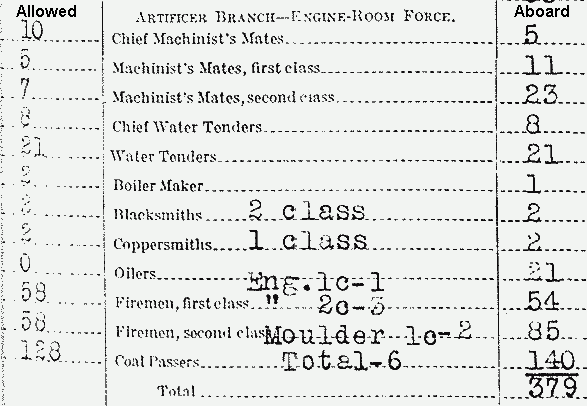 |




